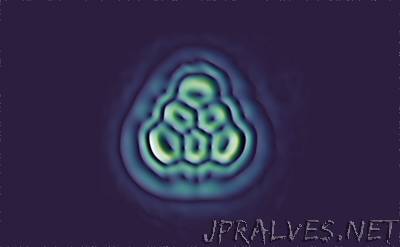
“Researchers at IBM have created an elusive molecule by knocking around atoms using a needle-like microscope tip. The flat, triangular fragment of a mesh of carbon atoms, called triangulene, is too unstable to be made by conventional chemical synthesis, and could find use in electronics. This isn’t the first time that atomic manipulation has been used to create unstable molecules that couldn’t be made conventionally — but this one is especially desirable. “Triangulene is the first molecule that we’ve made that chemists have tried hard, and failed, to make already,” says Leo Gross, who led the IBM team at the firm’s laboratories in Zurich, Switzerland. The creation of triangulene demonstrates a new type of chemical synthesis, says Philip Moriarty, a nanoscientist who specializes in molecular manipulation at the University of Nottingham, UK. In conventional synthesis, chemists react molecules together to build up larger structures. Here, by contrast, atoms on individual molecules were physically manipulated using a microscope.”
